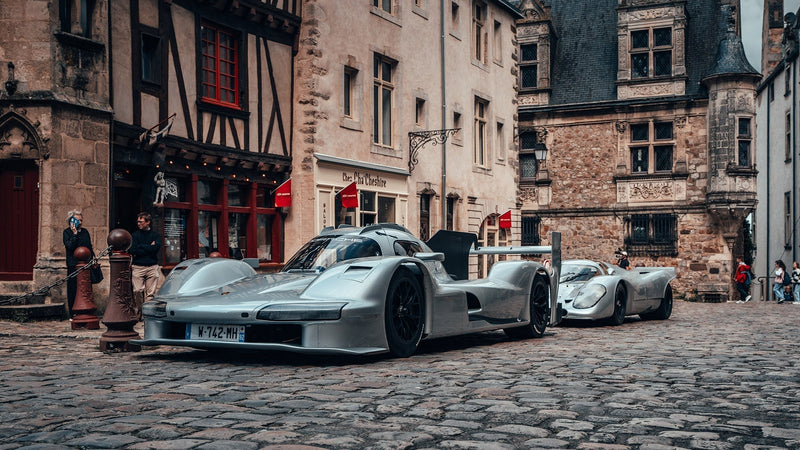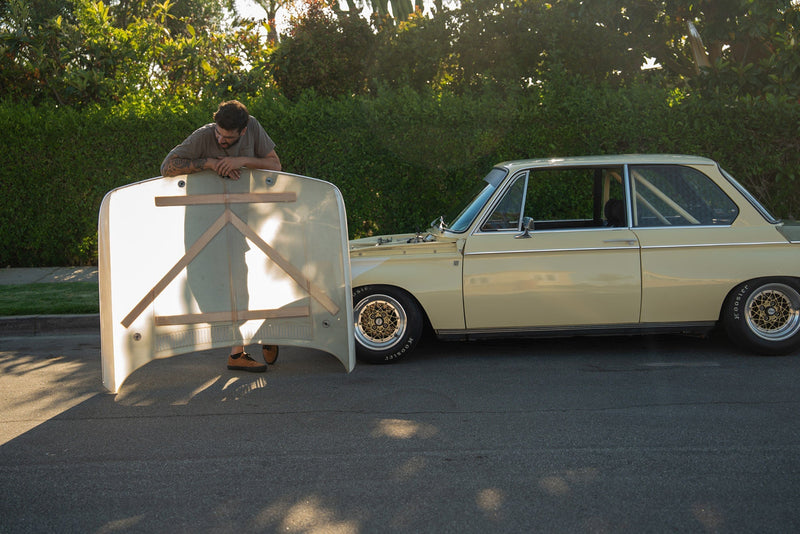It’s been getting steadily easier to be cynical this year, and given the course it’s taken so far it might seem only natural that the 2020 24 Hours of Le Mans would go down as the darkest and emptiest edition of the endurance race to date. But that’s only literally speaking, and we couldn’t be happier to have been a small part of this infallibly special contest with the Rebellion Racing LMP1 team, which took second and fourth-place this past weekend.



The atmosphere of this year’s running was a bit grim, but unavoidable. There were no driver parades through the town of Le Mans, the delayed start of the race from mid June to this past Saturday in late September meant almost four additional hours of racing through the night compared to the usual eight, and the devoted crowd of a quarter-million or more enthusiastic spectators was traded for barren grandstands and open fields devoid of the sprawl of temporary fan encampments pitched each summer between the rows of dust-covered and snack-packed sports cars and family haulers.



The overzealous and severely sunburned day-drinkers, the earmuff-smothered kids on their parents’ shoulders, the veteran spectators with the T-shirts to prove it—all were absent for the 88th edition, with just a few marshals and media dotting the perimeter. But the 24 Hours of Le Mans is the greatest endurance race in the world for good reason, and there is really no such thing as just going through the motions here. Every instance of this historic day-long contest is a testament to physical, mental, and technological endurance, and that was the case this year as every other. The fans and their energy are part of what makes Le Mans the event that it is, but their presence is only an amplifier to what’s taking place on the track.






With that said, nobody in the future will sanely rank the 2020 race among the most exciting in Le Mans history, or at least not from the point of view of pure motorsport spectacle. Still, there was no shortage of significance wrapped up in this bittersweet but forward-looking weekend of racing. Most notably, this edition marked the end of the LMP1 category at Le Mans, the origins of which can be traced all the way back to the early 1990s well before Audi defined the class for a decade and a half in the new millennium.
The end of LMP1 at Le Mans consequently made this edition the last one for Toyota’s TS050, which secured its third overall race victory in a row on Sunday afternoon. Whatever Toyota’s critics say about its competition—for the past three years, the TS050 has been the only factory-backed “blank check” all-wheel drive hybrid competing in the top class at Le Mans—it will deservedly be grouped with the most dominant contenders in the race’s timeline. When future generations of fans look back at the Le Mans winners, they will see a Toyota hat trick, and that’s a fact with more staying power than any opinion on its context.

The TS050 is also the fastest car to ever lap the modern Le Mans layout. Before winning the race in 2018, 2019, and 2020, the TS050 put up more than just a fight against the likes of Audi and Porsche—recall Toyota’s 2016 only-at-Le-Mans heartbreak—making its wins the product of huge investments of time, effort, capital, and talent. We are extremely proud to have had our Petrolicious logo on the flanks of the Rebellion R-13s that provided Toyota’s main competition over the weekend, but we could hardly pick a more deserving team to lose to.
Our friends at Rebellion have also been racing at Le Mans for quite a while—this was the team's 13th start—with their decade-plus of experience at the race including an LMP1 car that was powered by Toyota from 2011 to 2014. This past Sunday saw a fitting podium for the LMP1 category’s final Le Mans—Toyota taking first and third, with Rebellion on the second step representing the enduring and rewarded efforts of a manufacturer and a privateer alike.





The LMP2 teams had a more tumultuous race over the weekend than usual, with mechanical and driver errors coming semi-frequently in the 24-car LMP2 field ahead of Sunday morning, but the class-winning Oreca of the United Autosports team managed to avoid any serious issues to take the win, followed by the Gibson-powered Orecas of Jota and Panis Racing.
In the much winnowed GTE Pro category—reduced to just the Porsche GT Team, Ferrari’s AF Corse, Aston Martin Racing, and WeatherTech Racing’s Ferrari 488 GTE Evo—the balance of performance seemed to affect the Porsche cars the most, while Aston Martin enjoyed a pretty comfortable sweep of both GTE Pro and Am categories with its Vantage AMR.




Next year will see the new hypercars make their Le Mans debut, with the likely contenders at the moment being Toyota and Scuderia Cameron Glickenhaus, likely joined by a few grandfathered-in non-hybrid LMP1 cars. The class should grow in the ensuing years, with Peugeot and Rebellion teaming up on a car that could start racing in 2022, among interest from other manufacturers and privateers. There is also the incoming integration with IMSA (likely by 2023) which will allow the upcoming Le Mans Daytona Hybrid (LMDh) class to compete for the overall win alongside the hypercars at Le Mans. There is a lot to be hopeful for, or at least some competitive racing to look forward to, but we’ll certainly miss the LMP1 dynasties, both factory-backed and privateer.
It would have been special to watch the end of their Le Mans era in person, but the circumstances that prevented the opportunity also make it all the more ripe for a new one. For the time being, we'd like to congratulate the class winners and every other participant, and especially our friends at Rebellion Racing, who added the Petrolicious name to the liveries on its two cars; the second-place-finishing #1 R-13 driven by Bruno Senna, Norman Nato, and Gustavo Menezes, and the fourth-place-finishing #3 car driven by Louis Delétraz, Nathanael Berthon, and Romain Dumas.



























































